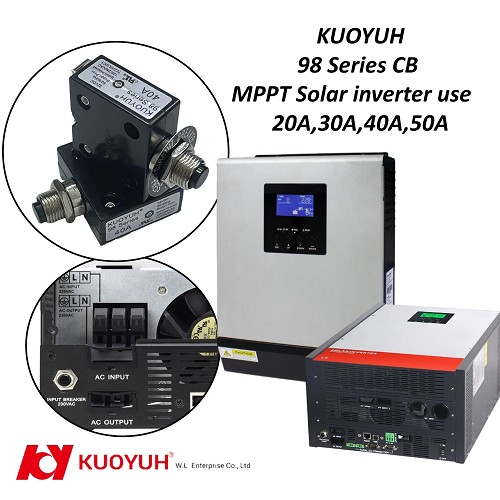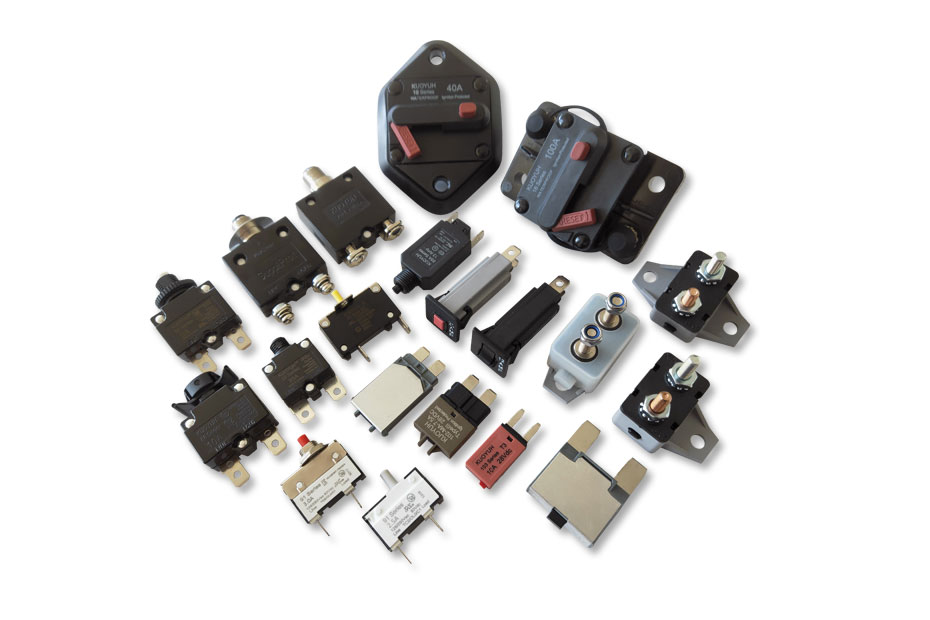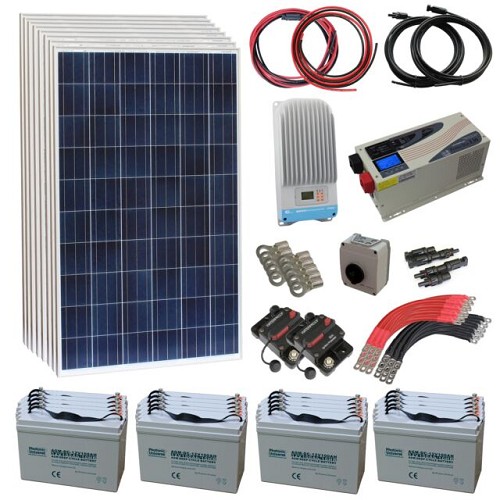The Critical Role of Circuit Breakers in Solar Inverters

Why Do Home Solar Inverters Need KUOYUH 98 and 16 Series Circuit Breakers?
As solar power becomes increasingly popular, the safety and efficiency of home solar inverter systems have become top concerns for users. KUOYUH 98 Series AC circuit breakers and KUOYUH 16 Series DC circuit breakers play a crucial role in ensuring stable system operation, extending equipment lifespan, and complying with safety standards.
KUOYUH 98 Series AC Circuit Breakers: Protection for the AC Side of Solar Inverters
KUOYUH 98 Series circuit breakers are mainly used on the alternating current (AC) side of inverters, providing the following protections:
- Overcurrent Protection: Effectively prevents excessive current caused by short circuits or overloads, protecting the inverter and wiring.
- Enhanced Safety:Quickly cuts off power in the event of electrical faults, reducing fire and electric shock risks.
- Equipment Protection:Prevents voltage surges or short circuits from damaging sensitive inverter components.
- Compliance with Safety Standards:Meets national and international electrical safety regulations, ensuring system compliance.
- Manual Control:Provides a convenient manual power disconnection mechanism for easy maintenance and repairs.
KUOYUH 16 Series DC Circuit Breakers: Safety Protection for Batteries and DC Circuits
- Overcurrent Protection:Prevents short circuits or overloads from damaging the battery and inverter, maintaining system integrity
- Battery Damage Prevention: Particularly useful for lithium-ion or lead-acid batteries, reducing risks of overheating or fire.
- Surge Protection:Absorbs sudden voltage or current spikes, minimizing damage risks to expensive equipment.
- Safe Maintenance:Allows safe disconnection of battery power during maintenance, preventing accidental electrical shocks.
- Regulatory Compliance: Meets electrical safety standards, ensuring the system’s legality and reliability.
Why Do Solar Inverters Trip or Reduce Power Output?
- Overvoltage:The voltage from solar panels exceeds the inverter’s limits.
- Overload:Excessive power demand causes the inverter to shut down.
- Undervoltage:Low voltage due to shading or poor connections affects performance.
- Ground Faults:Current leakage to the ground poses safety risks.
- High Grid Voltage:If the grid voltage exceeds the inverter’s permissible range, the device disconnects automatically.
- Voltage Rise at Connection Points:Thin power cables or high solar output can cause voltage buildup, affecting system operation.
Solutions and Precautions
- Contact Your Grid Provider: If grid voltage is too high, consult your provider for solutions.
- Hire a Professional Electrician for Inspection: Check grid voltage, wiring connections, and cable size.
- Do Not Tamper with Safety Mechanisms: The inverter’s protective mechanisms are designed to safeguard the system—do not modify them.
Conclusion:
KUOYUH 98 Series AC circuit breakers and KUOYUH 16 Series DC circuit breakers play essential roles in home solar inverter systems. The former protects the AC side, while the latter ensures DC and battery safety, both working together to maintain long-term system stability. By implementing proper electrical protection and regular inspections, users can enhance the efficiency and safety of their solar power systems, safeguarding their investment and ensuring secure electricity usage.






